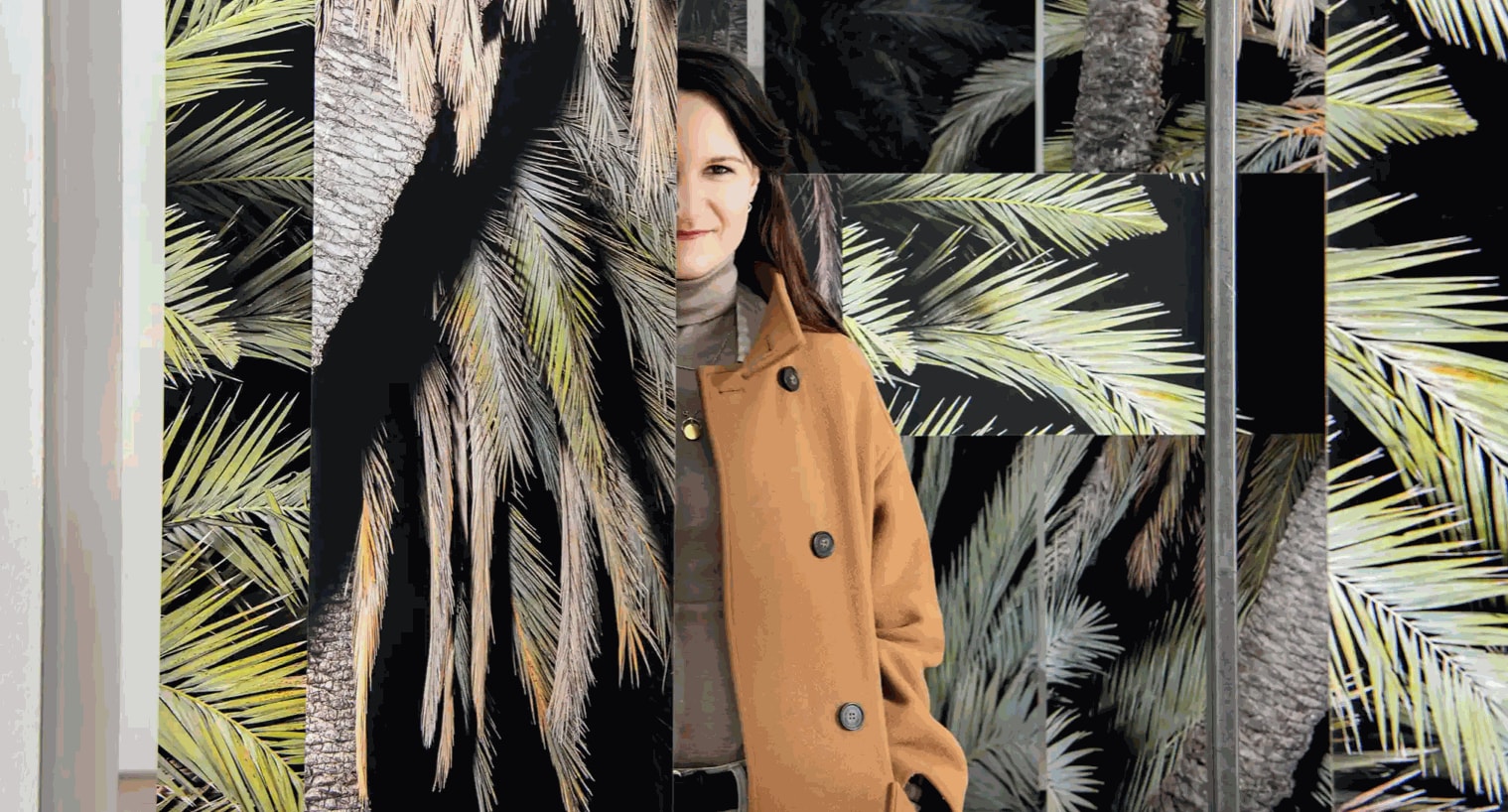27 January 2022 From disappeared mountains to continent-crossing palm trees, Noémie Goudal’s work uses deep climate history to depict the world we’re heading into.
This show is very much about paleoclimatology – how scientists are studying the past climate partly to understand what happened but also partly to help them predict what will happen in future and how we can plan for it,” says Noémie Goudal. “It’s by looking at the past, at changes in heat and the elements, that we can apprehend what will happen.”

Noémie Goudal. Photograph: Linda Nylind/The Guardian
We’re discussing her exhibition Post Atlantica, which opens at London’s Edel Assanti gallery on this week. Including film, photography, a monumental sculptural installation and a series of ceramics, it’s a show united by the French artist’s ongoing fascination with the history of Earth, its climate and its geology. The title refers to Atlantica, an ancient continent that formed about 2bn years ago then divided to form parts of present-day Africa and South America; paleoclimatologists take a deep dive into that past and more, and Goudal has spent years researching their work.
Take Camille Dusséaux, for example, who has been studying ancient drops of water found underground. She has worked with 300m-year-old fluids found in the Armorican Massif, a rumpled section of the Earth’s crust in north-west France, and by analysing those drops was able to pinpoint the top of a mountain that once stood in Brittany. By analysing drops found in sharks’ teeth fossils, she was then able to find the contemporary sea level, and therefore the mountain’s height.
“It’s like Sherlock Holmes!” says Goudal, who met with Dusséaux and was inspired to make a photographic triptych titled Plongée [or “Diving”]. The large-scale images show a snow-topped mountain cut off by what looks like a right-angle of smooth rock; they evoke diving down through the layers of history of our 4.5-bn-year-old planet, and cut-away diagrams of its interior. But on closer inspection these smooth sections of rock are pieces of cardboard, painstakingly shot at the scene. The images are an optical illusion, albeit one that shows its own workings, because Post Atlantica also probes the limits of our perceptions and understanding.
A video installation shows ocean waves crashing into rocks, projected onto three photographs of the same scene. It’s a meditation on the way water erodes the landscape so slowly it’s imperceptible to the human eye, and the different rates of human and geological change. “We apprehend the world as fixed – we have borders, and we have atlases that show the world as it is,” Goudal comments. “But even the Alps are moving, three or four centimetres per year.”
Similarly Goudal’s four-metre sculpture shows palm trees, a reference to the Phoenix atlantica, a rare species of palm found in South America and western Africa which helped prove the one-time existence of the Atlantica continent. The installation is comprised of life-size photographic strips of the same scene, which both assemble and split up the view; stand in the right place and one of Goudal’s artworks, Phoenix VI, hoves into view. Goudal worked with similar set-ups on location when she created the Phoenix series, taking a huge printer so she could instantly print off a 1:1 photograph of the trees, cut it into strips, pin up these strips over the scene, then shoot the whole lot together.
The result is a series of mind-bending trompe d’oeil images, which recall collages or digital glitches but are shot for real; Goudal deliberately shows some of her workings, including bulldog clips and poles in the frame. “There’s a link with the lab. It’s always about experimentation because you never know what you’re going to get,” she explains. “I’m very much working with the elements. I can’t control the wind, the rain, the sun that suddenly comes through the clouds. It’s about adapting. I think that’s what humans are good at.”
And that’s interesting, because although Goudal’s work poses fascinating questions about our perceptions, it’s far from pure formalist play. And though she’s a fast-emerging artist – the 38-year-old is showing Post Atlantica at the prestigious Les Rencontres d’Arles photography festival in summer – her ideas raise crucial concerns.
At London’s 2021 Frieze art fair she exhibited a film titled Below the Deep South, for example, footage of flames ripping through a scene made of photographic backdrops; destroying layer after layer, the fire only stopped when it reached reality. Inevitably, it suggested the climate emergency. Similarly, paleoclimatologists research changes that evolved over millennia. In future, those changes will happen much faster, making their outcomes hard to anticipate.
“When I talk to scientists they say, ‘Yes, we know what will happen if the carbon dioxide rate changes and the heat rises, but we don’t know how this will happen at such a fast rate’,” Goudal points out. “That’s why they’re so worried.”
And though “like every other person in our generation” Goudal is deeply worried about those changes, Post Atlantica deals with a more fundamental philosophical shift. This exhibition isn’t about climate change per se, she says, it’s about how we perceive the world and our place in it – and how that has to evolve if we are to avert disaster.
“We feel that we know the universe, we know the moon, we know our bodies, we know our viruses, we know everything. But actually, we have to be more humble,” she says. “It’s about re-finding our place. If you just tell people ‘Stop using plastic bags, don’t travel’, it’s very abrupt and it becomes much more difficult [to follow]. But if we do a lot of thinking, some deeper philosophical thinking, we can grow into something so much richer and more positive.”


